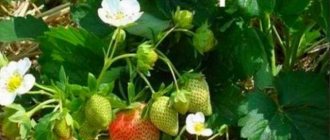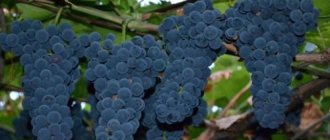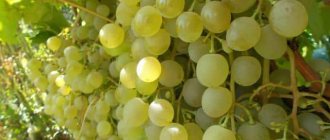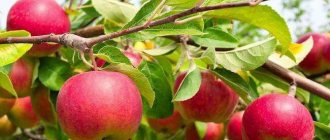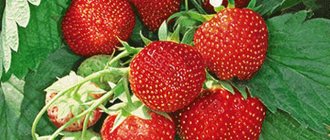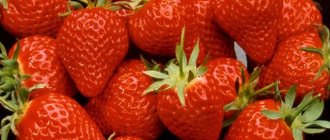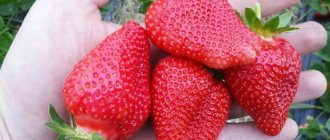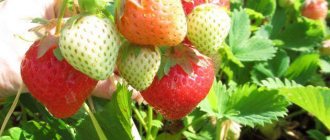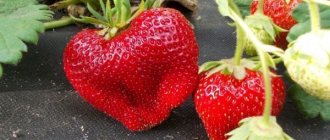Strawberry ampelous Tuscany was named after one of the regions of Italy, famous as a wine-growing region. Gardeners love it because the bushes are very beautiful during flowering.
This variety is suitable for those who really want to grow strawberries, but for some reason do not have the opportunity to plant the crop on the plot. Ampelous strawberries bear fruit when grown on window sills in flowerpots. This is both a beautiful and useful culture. For those who are suitable for this variety of strawberries, it will be useful to familiarize yourself with the basic rules of cultivation.
General characteristics of Tuscany strawberries
Remontance and ampelousness are the main qualities inherent in this variety. This means that strawberries are able to grow and bear fruit throughout the entire season, that is, they will please their owners with a harvest more than once. The fruiting season begins in early summer and ends in mid-October. If you wish, you can transplant the bushes into pots and continue caring for the plant at home, then the strawberries will bear fruit until mid-December.
An interesting feature of the variety: flowers can bloom and berries ripen on the bushes at the same time. The picture is rare and fascinating. The fruits of Tuscany are ripe scarlet berries with delicate pulp and strawberry aroma. They will certainly appeal to both adults and children.
Berries
The fruits are conical in shape, mostly one-dimensional. Occasionally there are “double” ones, simply huge, to the delight of children, to the chagrin of industrialists. The color is bright red, the skin is glossy. The average weight of the fruit is 30 g. When it rains, the berries do not get wet. Above average size remains throughout the harvest.
The pulp is dense, tasty, sweet, with a subtle strawberry aroma. Transportability is good. The taste of the berries does not deteriorate even with a lack of sunlight and excessive humidity.
Productivity
The variety is self-pollinating. The first wave of ripe berries appears in the second half of May. The yield is 1.2 kg. on the bush. The variety begins to reveal its potential from the second year after planting. It is characterized by stable productivity, which is practically independent of weather conditions.
Description of the appearance of the variety
The plant is a bush with a diameter of up to 45 cm, a height of up to 20 cm with long powerful mustaches. The mustache can grow from the mother bush to a distance of up to a meter. Strawberry Tuscany has dark green leaves with a glossy surface. And the flowers differ from other varieties in their crimson color. During flowering, the plant is covered with bright crimson buds, due to which decorative properties are attributed to Tuscany strawberries.
The bright red fruits of a conical elongated shape weigh about 40 g. However, to achieve high performance, strawberries require good care. Ripe berries have a sweet taste and juicy pulp.
A significant advantage of this variety is that the berries can be stored for a long time and even transported over long distances.
Reproduction
Tuscany strawberries are an F1 hybrid, so it is useless to collect seeds from the berries yourself. They do not inherit maternal qualities. Seed material is only suitable from seed laboratories.
At home, Tuscany easily and quickly reproduces with a mustache. If you managed to get just a couple of bushes, by the end of summer they will turn into a decent seedling bed. In September, the seedlings are cut off from the mother bush and planted for permanent residence. Next year there will be enough seedlings for all neighbors in the dacha cooperative.
Advantages
This variety has a number of advantages that will not leave any gardener indifferent:
- High and stable yield - in one season you can get up to 500 g of fruit from a bush.
- Commercial appearance of berries.
- Wonderful aroma and bright taste of the fruit, preserved even in strawberry dishes.
- Compact size of bushes.
- Decorative function. Strawberries are used to decorate balconies and even flower beds.
- Resistant to weather changes, cold and heat.
- Bushes grown in temperate latitudes do not require shelter for the winter.
- Easy plant care.
- Resistance to fungal and infectious diseases.
- Easy propagation using rosettes.
- Continuous fruiting.
- Strawberries can be grown either from seeds yourself or from purchased seedlings.
Collection and storage of strawberries
The processes of flowering and ripening of berries in the crop are characterized by continuity. Thanks to this, strawberries produce a high, stable yield. Fruiting occurs in two stages. The first lasts a month, the second occurs 7-10 days after the start of the first.
The berries are harvested when they become dense and acquire a uniform pink color. Strawberries should not remain on the shoots for a long time, as they quickly become overripe. One bush produces from 1 to 1.5 kg of berries per season.
Despite the long period of fruiting, it can be extended. To do this, gardeners use a little trick. The containers in which Tuscany grows are brought indoors. The person will pick strawberries until autumn.
How to grow berries from seeds
The easiest way to grow Tuscany is from ready-made seedlings. You need to purchase it in the spring. However, you can spend a little more time and try growing Tuscany from seeds. Only seeds need to be purchased from an official supplier, so as not to run into a fake. The method of growing from seeds is quite simple:
- Prepare a container with soil.
- Spread the seeds on the surface of the ground without deepening them.
- Lightly sprinkle the seeds and moisten the soil with water from a spray bottle.
- Cover the container with film or glass.
- The container with the seeds should be kept in a warm place until the seeds germinate. They need to be moistened and ventilated once a day.
- After germination, the glass must be removed and the container moved to a bright place.
- As soon as two leaves appear, you need to pick.
- After the seedlings have grown stronger, the bushes need to be transplanted into separate containers for further cultivation.
You can plant strawberries in the ground at any time, but it is preferable to do this in the spring. To do this, the seeds need to be sown at the end of winter, then at the beginning of summer you can taste the first berries. However, the first year's harvest will not be very large. The full fruiting of this hybrid will be revealed only in the second year.
Agricultural technology
Watering
Watering is carried out in dry, hot weather 2-3 times a week. When watering, you should try not to get it on the foliage and berries. The best method of watering is drip.
Loosening and removal of whiskers
It is necessary to loosen the soil after each watering so that a crust does not form, which prevents the flow of air to the roots. Mulching the soil with straw, sawdust, leaf litter or non-woven material will help reduce the number of wires, loosening and watering. The mustache is removed immediately as it grows, without waiting for it to take root. Removal is done with a knife or pruning shears; you should not pull out the mustache, because you can damage the bush itself.
Feeding
All modern varieties are famous for their productivity, but require timely feeding.
- Strawberries require nitrogen in spring. Fertilize with infusion of mullein (1:10), bird droppings (1:20) or urea. Nitrogen will lead to an increase in green mass.
- During flowering, good results will be achieved by spraying complex fertilizers on the leaves (10-15 g per 10 liters of water)
- After fruiting, add 10 g of urea, 15 g of superphosphate, 25 g of potassium salt per 1 m2. Mineral fertilizers can be replaced with organic matter (a tablespoon of dry chicken manure and a glass of ash per m2)
Treatments for diseases and pests
Naiads can be affected by mites and suffer from gray rot in rainy weather.
For prevention, at the beginning of the growing season, treatment is carried out with Actellik (mites and weevils) and Horus (diseases). At the end of the season, the treatment is repeated. If pests or diseases appear during fruiting, then only biological products can be used. Fitosporin will help against fungal diseases, and Fitoverm or Actofit will help against pests. The berries can be eaten within a few days after processing.
Reproduction
The easiest way to propagate Naiad garden strawberries is with a mustache. A few of the strongest bushes are left, all flower stalks are removed from them during the season, and cups with a mixture of peat and vermicompost are placed under the mustaches. At the end of summer, seedlings with ZKS can already be planted in a permanent place.
Soil preparation
Despite the unpretentiousness of the Tuscany variety, the soil for its cultivation must be fertile and saturated with oxygen.
To grow good strawberries, you need to prepare a mixture of the following ingredients:
- compost – 3 parts;
- peat – 6 parts;
- turf – 2 parts;
- sand - 1 part.
This substance is ideal for growing strawberries. You can also fertilize the soil with humus, this will only benefit the plant. For planting in pots, you can also purchase ready-made soil specifically for Tuscany.
Features of planting work
In order for strawberries to produce a good harvest, it is necessary to follow existing agrotechnical recommendations for planting them.
Required soil composition
The soil should be fertile, light and loose for better aeration of the roots. The variety is undemanding to soil type.
An artificial substrate for pots is prepared from 6 parts peat, 3 parts turf, 3 parts humus or compost and 1 part sand or vermiculite. 1 bush requires 3 liters of such soil.
Site selection and preparation
It is important that the area for the strawberries is well lit. Plants should not be planted in areas that are too wet or swampy to prevent root rot. It is not recommended to plant different varieties of strawberries nearby. Due to cross-pollination, they lose their characteristic features.
How to choose seedlings
Seedlings must have a strong root system, strong leaves and shoots without damage or signs of disease. Sick, weak, wilted plants are not suitable for planting. Before planting, it is necessary to remove dried and rotten parts of the plant.
Timing and technology of planting seedlings
It is better to plant seedlings purchased or grown from seeds in open ground in April - May. Seedlings obtained by dividing the bush and propagating rosettes are planted in August - September. When planted in spring, the plant can bear fruit this summer.
It is recommended to remove the first flower stalks so that they do not weaken the bush. The variety requires large areas for shoot growth. The bushes are placed at a distance of at least 0.8-1.5 m from each other. With denser planting, the berries become smaller.
Holes are dug in the ground at the selected site. Humus, peat and ash are placed in them. The seedling is placed so that the root collar is 2-3 cm above the soil level. After digging the hole, the plant is watered abundantly at the root.
Further care
Strawberry Tuscany grows very quickly, covering all available space with a carpet. This makes the loosening process problematic. However, if you periodically trim the tendrils and point the remaining ones in one direction, you can still carefully loosen the soil.
Weeds must be removed immediately. They reduce the yield of bushes. However, strawberries themselves fight well against uninvited guests, pushing them out of the garden.
The mustache does not have to be removed permanently, only if it gets in the way. In general, daughter rosettes are capable of bearing fruit on their own, so you should not disturb this natural process.
At the beginning and end of the growing season, it is advisable to cover the bushes with film. Additional lighting extends the ripening period of the berries by another couple of months. Tuscany can also be successfully grown in greenhouses - the yield will be guaranteed.
Description and characteristics of culture
Despite the fact that most strawberry varieties are very similar to each other and, at first glance, it is very difficult to distinguish them, Arosa has a number of external characteristics that are characteristic only of this variety.
Kusta
An adult bush is of medium size and widely “scatters” its leaves. The leaves themselves have a light green tint, the plate is slightly wrinkled and has light fluff around the edges. The petioles are also fluffy. The bush grows and forms very quickly.
The peduncle is located above the leaves. The flower itself is large white, cup-shaped. The antennae are medium in size, however, quite capable of rapid reproduction. One bush forms about 10 inflorescences.
Yagod
Arosa berries are large (20–30 g), juicy, sweet. They have a cone-shaped shape (typical of most varieties of strawberries). Color can vary from orange-scarlet to red. The seeds on the berries are slightly pressed, they are clearly visible and easy to separate from the elastic, shiny surface.
Pest Control
Of the insects, the most dangerous for Tuscany are ticks. If these pests invade, you will have to treat the beds with a solution of karbofos. Berries cannot be eaten after this procedure. It is better to prevent tick infestations using proven methods.
- You can prepare a decoction of onion peels by pouring 300 g of onion peels with water and boiling for seven minutes.
- You can make a garlic infusion. Cut two heads of garlic together with the peel and add six liters of water, leave in the sun for three days. Then add half a piece of grated laundry soap.
- The plant should be sprayed in cloudy weather in the morning or evening.
- To get rid of aphids, you need to remove ants from the area. If some disappear, others will disappear too.
- Colloidal sulfur also helps against strawberry mite.
Diseases and pests
Strawberry bushes are often attacked by pests and the development of various diseases.
However, if the problem is detected in a timely manner, pest control will be quite easy:
- Strawberry mite: in mid-spring, you need to douse the bushes and beds with hot water (about 60 °C), then sprinkle the leaves from the shoots with an infusion of onion peels, or purchase special preparations in the store to combat the pest.
- Weevil: get rid of old mulch, treat the soil around the bush with red hot pepper or wormwood.
- Nematode: dig up the plant along with a lump of soil, transplant it to the ridges next to the calendula.
- Leaf roller, aphid: these pests are more likely to be afraid of chemicals than folk remedies. The bushes should be treated according to the instructions.
- Birds: birds love to spoil the beds and harm the bushes themselves. To do this, it is necessary to cover Arosa with a special thick mesh.
- Snails: set special traps, if possible, collect by hand.
The most common cultural diseases and methods of treatment:
- Phytophthora - treatment of the entire plant with a light solution of iodine and potassium permanganate.
- Powdery mildew - treatment of the entire plant with a light solution of iodine, potassium permanganate + use of fungicides according to the instructions.
- Brown spot - treat all plantings with Nitrophen.
- Gray rot - garlic tinctures, as well as watering with an ash solution, work well against this disease.
Caring for strawberries in winter
Despite the resistance of Tuscany strawberries to weather conditions in regions with harsh winters and severe frosts, care must be taken to insulate the bushes. It is most convenient to grow strawberries in pots; with the onset of cold weather, they need to be moved to a balcony, loggia or other convenient place.
You need to store the pots as follows: put a piece of foam plastic and a smaller box in a large box. Place a pot with a plant in it. The space between the walls of the boxes is filled with foam, and the plant is covered with sawdust.
Do not forget about moistening the soil even in winter. When it warms up, you need to ventilate the pots with strawberries, and when the thermometer marks 0, the pots can be taken out of the boxes. You can also move pots of strawberries home and continue to care for them all winter.
If Tuscany overwinters in beds, it must be covered with special covering material, sawdust or straw. Under no circumstances should film be used, as it can cause fungal infections.
Advantages and disadvantages of the variety
Arosa is a very hardy crop.
- It has a huge number of advantages compared to other varieties:
- no risk of crop loss;
- early ripeness;
- high productivity rates (about 2 t/1 ha);
- can grow both in the garden and at home;
- high taste indicators;
- excellent transportability over long distances;
- high resistance to diseases and pests.
- The disadvantages of the variety include:
- the need for constant watering (if not present, the taste will greatly deteriorate);
- Berries may ripen unevenly.
How to care
When growing this variety of strawberries, it is necessary to provide an irrigation system. Drip irrigation or sprinkling methods are excellent. Vikoda strawberries respond positively to watering as they are a moisture-dependent crop.
So you shouldn’t rely on natural rainfall when growing it. But you shouldn’t be particularly zealous, since standing water is the main cause of rotting of the root system. You can find out how Albion strawberries are watered by reading this description.
Mulching
The first layer of mulch must be laid when the first fruits set. The second time mulching should be done late in the fall. Peat or sawdust are excellent for these purposes. The thickness of the layer will be 5-6 cm. You should not sprinkle mulch on the bushes, and also do not cover the leaves.
Diseases and pests
And although the variety is resistant to various pathologies, if it is poorly cared for, gray rot can affect the berry bush. This is a rather dangerous fungal disease. To combat it, it is necessary to urgently remove the affected berries from the garden, since the disease will spread through small spores with the help of wind and rain. During the growing season, before flowering begins, it is worth treating the plant with Horus and Fundazol. Apply the treatment a second time after harvesting.
Powdery mildew is also a particular danger for strawberries. It affects all above-ground organs of the plant, and especially likes to feast on the leaves, as a result of which they become rough and begin to curl. To combat the disease, it is necessary to treat plants before flowering with Horus. And here’s how to mulch and care for the Lord strawberry variety.
Berry bushes are affected by pests, including the strawberry transparent mite. It damages the leaves. Treatment with Actelik remains an effective method of control. Complete these activities no later than August 10. Then the bushes will be able to form an excellent crown of leaves.
And here you can see what the Kimberly strawberry variety looks like in the photo.
It is also worth reading information about existing reviews about the Darselect strawberry variety.
Vikoda is a universal strawberry variety that, if grown correctly, can reward you with a rich harvest. In addition, the bushes have high winter hardiness and strong immunity to parasites and pests.
It bears fruit on almost any soil, but it is important to fertilize it on time. If you don’t do this, then you can forget about a high yield. Gardeners nicknamed the variety of the Dutch selection Vikoda “noble strawberry”
The culture adapts to difficult climatic conditions without ceasing to bear large fruits. Vikoda strawberry tolerates frosty winters and hot summers, only during drought it requires abundant watering
Gardeners nicknamed the Dutch variety Vikoda the noble strawberry. The culture adapts to difficult climatic conditions without ceasing to bear large fruits. Vikoda strawberry tolerates frosty winters and hot summers, only during drought it requires abundant watering.
Landing
Strawberries Tuscany are suitable for cultivation in open ground
Bush seedlings are planted in open ground in spring or early autumn. Purchased seedlings have stable immunity and a developed root system. When planted in spring, it is able to begin bearing fruit in the current summer season.
It is recommended to remove the first flower stalks so that the bush gains strength.
The variety is demanding on spacious areas. When planting in the ground, it is necessary to maintain a distance between plantings of at least 0.8 m. The ideal planting width is 1.2-1.5 meters between bushes.
pour soil into the prepared container; sow the seeds on the surface without deepening (attention: the seeds are very small); lightly sprinkle with the rest of the soil; moisten the crops with a spray gun; cover with glass or polyethylene; put in a warm place for germination; Ventilate and moisten once a day; when “spouts” appear, remove the cover; place the container on a lighted windowsill; continue hydration; control the temperature; when 2 leaves appear, make a dive; transplant the seedlings into separate cups for growing
Priming
Fertile and breathable soil is suitable for remontant strawberries. For growing in pots, you can use ready-made store-bought strawberry mixtures. You can prepare the soil mixture yourself.
Soil preparation recipe:
- 6 parts peat soil;
- 3 parts of turf land;
- 3 parts humus or compost;
- 1 part sand or vermiculite.
For planting in containers, each bush will require up to 3 liters of soil.
Shoot care
Strawberry Tuscany actively forms mustaches, which easily take root in the first weeks
Tuscany strawberries quickly form tendrils that take root in the soil. In the absence of proper control, by the end of summer a real strawberry meadow with flowers and berries may grow.
The shoots deplete the mother bush and lead to a decrease in yield and shredding of the berries.
Mustache removal is carried out once every 1.5-2 weeks. They are cut off completely, leaving only the first 2 rosettes, which can later be used for propagation.
Watering
Cold and chlorinated water can be harmful and lead to diseases of the berry crop. To avoid the formation of rot, during flowering and fruiting, water only at the root.
Top dressing
In order for Tuscany garden strawberries to please with abundant flowering and sweet berries, they need additional nutrition. It is recommended to fertilize once every 2-3 weeks.
The most important secret to successfully growing Tuscany is regular feeding.
Complex fertilizers containing a maximum of microelements in chelated form are suitable for these purposes. Macroelements have the following ratio parameters: N (1) P (3) K (6). When purchasing fertilizer, it is best to consult a specialist.
Warmth and light
Strawberry Tuscany is a light-loving and heat-loving plant. To get a good harvest, you should adhere to the growing temperature regime:
- growing season (day 7-10C, at night not lower than 5C);
- fruiting (day 25C, night 18C).
Daylight hours should ideally be 12-14 hours.
Strawberry bushes grown at home need to be slightly shaded from the hot sun
With high-quality and competent care, Tuscany strawberries do not lose their ability to bear fruit throughout the year. This requires:
- control the formation of the mustache;
- provide sunlight in summer;
- shade during hot weather;
- in winter, supplement lighting with artificial fluorescent lamps;
- ventilate regularly;
- in summer, take it out into the fresh air;
- do not allow the temperature to drop below 18C;
- carry out fertilizing.
Experts note that the variety can be planted at any convenient time and place, however, if you buy seedlings on the market or order them by mail, it is preferable to do the work in the spring. In this case, the chances that the plant will take root increase. After planting the plant on the plot in the spring, you will be able to enjoy tasty and healthy berries with the onset of summer.
If you decide to grow strawberries from seeds yourself, you need to start planting them in the last winter month so that by the end of spring you will have full-fledged seedlings. Then the first fruits will appear only after a year.
Soil, watering and hardening of strawberries
The culture does not like it when the root system dries out for a long time, especially since the volume of water in the pots is limited. To retain water longer, the soil is mixed with special hydrogels. For this purpose, you can also install containers in pallets specially selected for the required dimensions.
In the spring, before planting strawberry seedlings in the ground, they are hardened off. To do this, reduce watering and often take it out to an open loggia or terrace. Transplantation is carried out in May, when stable above-zero temperatures allow.
Tuscany strawberries, like other varieties, prefer slightly acidic and neutral soils with a pH of 5-6. The composition of the soil should be sandy loam or loamy with a good humus content. Podzolic soils must be enriched with mineral and organic fertilizers. To do this, it is enough to contribute per 1 sq. meter 3 tbsp. l. azophoska and a bucket of leaf humus.
Elsanta strawberries - variety description
Important! It is better to plant seedlings in the evening. The distance between bushes is maintained at about 30 cm.
After planting, you can mulch the soil with grass without seeds or with a special dark, air-permeable material that is sold in agricultural stores.
Although Tuscany strawberries are drought-resistant, young plants should not be allowed to dry out. For successful growth and further fruiting of plants, you need to try to regularly water the plantings. When watering, monitor the condition of the strawberry rosette so that it is not covered with earth.
Reviews
I plant Tuscany for decorative purposes around the gazebo. You won’t get a big harvest from it, and the fruits aren’t the sweetest, but you can eat a couple of berries in the July heat and admire the beautiful pink flowers.
Strawberries Tuscany will enhance any garden and make the terrace or porch of your home cozy. Tuscany is a decorative variety. It won’t require any special care, but you won’t get a high yield from it either. Landscape designers will appreciate the variety, but berry growers definitely have no need for it.
The best hanging varieties
Previously, much was not required of decorative strawberry varieties - as long as they grew and were beautiful. Today, breeders have developed dozens of varieties that are not only decorative, but also have all the qualities of the best strawberries - they are productive, have tasty fruits, and are resistant to viruses, bacteria and fungi.
Table 1 shows the most popular varieties of hanging strawberries and their features.
Table 1
| Variety | Average weight of berries, g | Repairability | Short description |
| Tuscany | 30 | Yes | Collection from one bush – 1 kg. A relatively young variety (brought out in 2011). The bushes are compact, up to 30 cm in diameter. The length of the shoots reaches 1 m. |
| Temptation F1* | 15-25 | Yes | Up to 20 flower stalks are formed on an adult bush. The fruits are large and juicy. Harvesting begins a month after flowering. The pulp is sweet, dense, pleasantly smelling. Up to 1.2 kg of berries are collected from the bush. |
| Queen Elizabeth II | 30-40 | Yes | The variety is acclimatized in Russia. The fruits have a regular cone shape. The color is rich red, the skin is smooth and glossy. Fruits 2-3 times per season. Transplantation - every 1.5 years. |
| Kletter Star | 40-50 | Yes | High resistance to drought and frost. Able to endure winters without shelter. The bushes are compact, with a lot of tendrils. Peduncles bend down under the weight of the fruit. The fruits are juicy, bright red, with a strong aroma. The fruits tolerate transportation well. |
| Temptation | 30 | Yes | The bushes are small, densely leafy. Peduncles are long, with large flowers. The berries are large, oblong, cone-shaped, bright red. The aroma has nutmeg notes. High frost resistance. Does not tolerate heat and drought well. Harvest – 1.5 kg. |
| Geneva | 45-50 | Yes | The bushes are medium-sized, spreading. They are not placed close to each other - the bushes need space. Crowding increases the risk of gray rot. There are not many whiskers - about 7 pieces on one plant. The shape of the berries is a truncated cone. The surface is glossy, red. The pulp is juicy and aromatic. The taste is sweet, no sourness. The main difference of the variety is the ability to bear fruit in one place for a long time, not 5-2 years, but 5-6 years. |
| Ostara | 50-60 (first berries), then 15-30 | Yes | A reliable variety that sets fruit regardless of daylight hours. The variety is early fruiting. The height of the bushes is 25 cm. The first berries appear in June, the bulk of the harvest is 80%, ripens in August-September. One bush produces 1.2 kg of berries. The peculiarity of this variety is the harvest on bushes growing from the mustache. They separate from the mother bush, take root, and bear fruit. The maximum size of berries is 75 g. The taste is sweet and sour, aromatic. The berries become smaller during the season. |
| Eternity S1** | 10-15 | Yes | Harvest per bush – 0.5 kg. A variety for amateur gardeners. Fruiting - from early summer until frost. Features: pink flowers. The variety is winter-hardy, resistant to drought, pests and diseases. |
| Fresco | 20 | Yes | Fruits from June to September. The fruits are not large, but numerous. The taste is sweet and sour, the aroma is strong, the flesh is dense but juicy. Features: It withstands temperature changes and has high immunity. |
| Pink miracle | 20-30 | long fruiting period | Pineapple hybrid. Very tasty berries. The bushes are powerful, with pink flowers. The variety is frost-resistant, with high immunity. The berries are collected as they ripen. |
| Elsanta | 40-45 | Yes | High-yielding variety - 2 kg of berries are harvested from one bush. The surface is shiny, glossy. The first berries have light ends. The berries are medium and large. The stem comes off easily. |
*The symbol F1 means that the plant is a hybrid obtained by crossing two different varieties. Seeds are not collected from the hybrid for further cultivation. Since it is unlikely that you will be able to get a good harvest from such seeds, and other positive qualities will also not be passed on to the next generation.
**The symbol S1 means the first generation of the varietal plant. Simply put, S1 is the seeds collected from the 1st year harvest of a varietal plant. S2 is the generation from S1. S1 has higher yield and other indicators than S2 and so on.
Landing
Growing in tablets from compressed peat has some differences from that described above. The washers must be placed in a plastic container into which warm water is poured. As soon as they are soaked, you should manually squeeze out excess liquid and then place them in an empty container. Up to 2 Carmen strawberry seeds are immersed in the planting recess of each tablet. This method has a clear advantage in that there is no need to carry out stratification and picking.
When seedlings are grown in soil, a common box must be used. As soon as the seedlings have sprouted in the container, that is, they have produced at least 3 leaves, they are planted in separate cups. To make it more convenient, replanting crops should be done as rarely as possible. Each strawberry seedling of this variety, along with the soil, is removed with a shovel and replanted. This method is called transshipment.
Reproduction by stepsons and division of bushes
When choosing propagation by stepsons, you should wait until the variety grows tendrils on the strongest bushes. As soon as the tendrils have roots firmly attached to the ground, they must be removed from the “mother” bush and planted in prepared holes.
Plants 2-4 years old are usually propagated by dividing the bush. This process is carried out before the bushes bloom in the spring or after the end of the harvest season - in the autumn. An adult Carmen strawberry bush must be dug up and divided into several parts using a knife or by hand. However, this should be done very carefully - each seedling must have a strong rosette with at least 3 leaves and a developed rhizome.
Each new strawberry bush is planted at the same depth as the parent bush. Carmen reproduces by division best in cloudy weather. Subsequently, the seedlings must be shaded until they are completely rooted.
Choosing a place and time for landing
The place for seedlings is first cleared of weeds. The place should be level, there should not be any unevenness, and seedlings should not be planted on a slope. It is better to choose loam; if this is not possible, then add peat or humus.
The optimal acidity of the soil should be neutral, that is, pH 5-6. In case of high acidity, liming should be carried out; in case of alkalinity, peat or gypsum should be added to the soil. Excess water must be removed from the site and the soil must be loosened well. All fertilizers (both organic and mineral) should be applied at least a couple of months before the strawberry seedlings are planted.
Planting in spring in the temperate latitudes of central Russia should be carried out in mid-May. In autumn it is worth planting before the first frost arrives - approximately in the first half of September. This way the crop will be able to fully adapt to the growing conditions.
Ampel strawberries - the best varieties
Foreign and domestic breeders have managed to develop species that are not inferior to conventional ones in terms of winter hardiness, yield levels, resistance to diseases and temperature changes.
According to gardeners, the best varieties include Kletter Star, Toscana, Queen Elizabeth 1 and 2, and Home Delicacy. Among the hybrids I would like to highlight: Fresco, Elan, Roman, Balcony Flow and Balcony Charm.
Tuscany
The hybrid was launched in 2011, but has already become a winner of world competitions. Its differences are compact decorativeness, high yield, excellent taste of fruits and an unusual ruby hue of flowers.
Maximum dimensions of the bush: height 20-30 cm, growth width 30-40 cm, shoot length - 1 m. Suitable for cultivation in open ground, it looks no less impressive in hanging pots, on balconies, in pots and containers in a heated room.
Homemade delicacy
Climbing early ripening strawberries. It has pronounced decorative qualities. Looks ideal in pots on the terrace and windowsill. The fruit size is medium, the taste is sweet and sour. The color is very rich, dark red.

